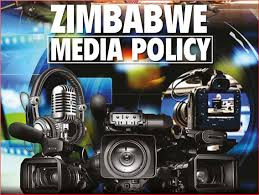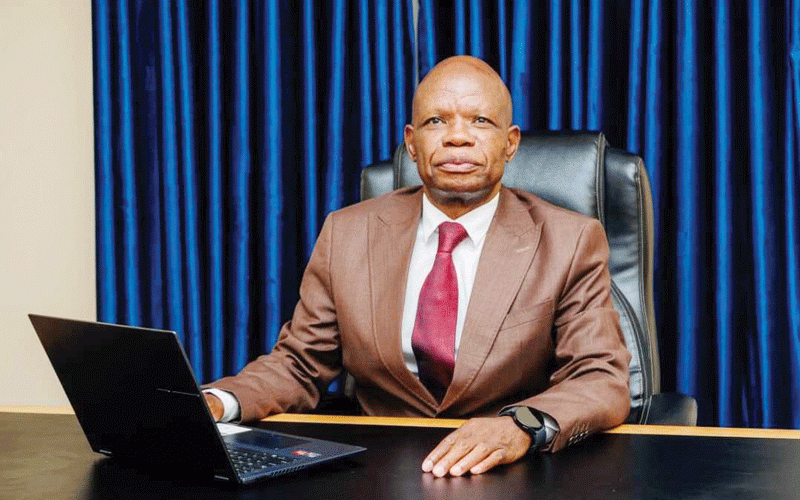
The Zimbabwe media policy recently launched by President Emmerson Mnangagwa has been a subject of widespread debate amid hope and pessimism in equal measure.
The interest that the policy has generated from across a wide range of stakeholders to an extent reflects on the impact of the media sector on people's livelihoods and indeed to the state of the country's democracy.
Media freedom and associated rights to freedom of expression and access to information are critical benchmarks and indicators on how well a country is faring in so far as respecting and promoting universal human rights.
In the case of Zimbabwe, media reforms are among the priorities set up by the government and the international community as part of the terms to enhance the country's democracy and to end the decades-long international isolation.
To that extent any legal and policy proposition around the media sector draws both local and international attention.
This context is particularly important in discussing the history of the Zimbabwe media policy, which culminated in the hyped up presidential launch.
It is important to locate why the country needed to have a media policy in the first instance and what that policy ought to serve.
The proposition for a media policy was initiated as far back as the realignment of media laws with the 2013 constitution.
- Media co-regulation is the way to go for Zimbabwe
- Free media environment key developmental reportage says PemSec Mangwana
- Gokomere school head succumbs to pressure
- In the groove: Has inflation hit the music markets?
Keep Reading
Proponents of media policy and law reform, most of who are within a network of journalistic professional associations and media support organisations, the Media Alliance of Zimbabwe (MAZ) as part of the advocacy agenda called for a policy framework that would underpin the media law reform process.
Initially, the Ministry of Information, Publicity and Broadcasting Services was the least responsive in the inter-ministerial forum set up to align laws with the constitution, at the height of polarization between the government and independent media players and civic society.
Notwithstanding the 2014 Information and Media Panel of Inquiry (IMPI) process, which had produced some progressive recommendations that were to underpin the media policy development and by extension inform the law reform process.
The Zimbabwe Media Commission (ZMC), which had largely been ignored in the IMPI process and for a while served without a board - were the ones leading the process of developing and implementing the media policy.
At this point there was a modicum of stakeholders consultations and although not as extensive, some non-state actors and representatives of media organisations and in the film sector were brought together to negotiate the reform trajectory.
The political events of November 2017 had far reaching consequences on the configuration of the Ministry of Information. With these changes new priorities emerged.
By and large these priorities were informed by the need to pick up the low hanging fruits that could expedite the readmission of Zimbabwe in critical global economic bodies such as the Commonwealth and the ending of the sanctions regime.
The conversations on a media policy, while they would find expression at different foras, were overtaken by the law reform process, particularly the repeal and unbundling of the Access to Information and Protection of Privacy Act (AIPPA).
The broadcasting regulatory framework as obtained in the Broadcasting Services Act had to also undergo a reform trajectory.
The law reform process was supposed to be guided by a policy framework in ensuring that both legislation and practice are responsive to the strategic needs of the sector.
The paths took a different turn with the enactment of the Freedom of Information Act, the ZMC Act, the Cyber and Data Protection Act and more recently the amendments to the Broadcasting Services Act.
To which end, the government must have come back to the drawing board on the issue of a media policy.
The intentions of having the policy guide the law making process had been overtaken by events and a deeper reflection on what would be the role of a policy in light of the developments was going to add value to the otherwise noble policy proposition.
No wonder why certain aspects obtained in the policy, which in itself is not law, are redundant and of little value as either it is repetitive or are issues already covered at law.
Even worse, there are inconsistencies between what the government is suggesting to be a policy imperative and what the law says.
In which case, what is obtained in an Act of Parliament and in the Constitution as the supreme law is what will carry the day.
Examples that quickly come to mind being diaspora funding, foreign direct investment and convergence in the broadcasting sector, all of which are covered in the policy yet are conspicuously missing in the recently promulgated Broadcasting Services Amendment Act.
The policy also emphasizes diversity in the broadcasting sector yet the law doesn't promote fair practice and sets a trend for media oligarchs, media capture and channels of expression remaining confined in a few hands.
Another case in point is how the policy places emphasis on new funding and sustainability models for the media, while the law retains archaic revenue collection models on the pretext of owning a radio and television receiver.
There are other examples in which the progressive framing of the policy is undermined by what is established at law, something that could have been avoided had the government carried out a validation exercise that could have strengthened the policy.
Yet even then, there is scope to take up some of these policy propositions as tools of holding government accountable against their own initiative and words.
The opening remarks by the president in the policy affirm the principle of media self-regulation, a significant change story of the recognition of media's rights to self-govern at the apex of the Executive.
The commitment by government as arguably the biggest media employer in the country to adopt as a matter of policy for the establishment of a National Employment Council (NEC) for journalists should be something that colleagues at the Zimbabwe Union of Journalists (ZUJ) are embracing.
It is also notable that there is alignment of thought between the strategic pillars of government and what MAZ stakeholders consider to be priorities for the media sector in the civic sector advocacy blueprint known as the Media Strategy for Zimbabwe.
So if the government is to indeed adopt a transparent and sincere multi-stakeholder approach in implementing the policy there could be scope for some incremental changes that can contribute to the development and growth of the media sector.
These opportunities do not however take away the structural challenges that confront the media, most of which are glaringly missing in the media policy.
The state and ruling elite control and capture of the information and communication sector is the elephant in the room.
Where the government was supposed to provide policy leadership on ensuring the transformation of state media as a constitutional imperative, there seems to be a myopic view on national image building and preserving of the broadly defined national interests.
National interests are normally conflated with the state and government interests while national image building is normally confused with propaganda.
The idea of conforming the media to the whims of the state weakens its competitiveness and in the process losing audience trust and with that revenue and income.
To that extent the policy aspirations of a diverse and viable media becomes incompatible with that of entrenching government interests and stake in the media.
Another existing challenge that the policy ignores is the operating environment for journalists and media practitioners, particularly safety and security concerns.
While there had been improvements on this account, thanks to the Media Institute of Southern Africa (Misa Zimbabwe) and ZUJ led police media action plan and other safety interventions, the recent arrest of Blessed Mhlanga and other such cases of journalists harassment should have prompted the government to adopt the safety of journalists as a policy imperative.
It would have been prudent for the government to commit to the domestication of the United Nations Plan of Action on the safety of journalists as one of the possible interventions to guarantee a safe working environment for journalists and the media.
Other policy propositions could have been expanded on as well, for example gender mainstreaming beyond sexual harassment and expanding on the mechanics of the Media Fund, beyond describing what is obtained at law.
The role of other stakeholders such as investors, advertisers and marketers was not adequately expounded on and while there is an implementation framework, the policy does little to demonstrate how some of the aspirations will be realized.
On the whole, it is notable that there is a media policy roadmap to engage the government on, albeit a decade late. Yet there is need to keep an eye on the more structural issues that require urgent reform.
*Nigel Nyamutumbu is a media development practitioner serving as the Coordinator of a network of journalistic professional associations and media support organizations the Media Alliance of Zimbabwe (MAZ). He can be contacted on njnya2@gmail.com or +263 772 501 557









